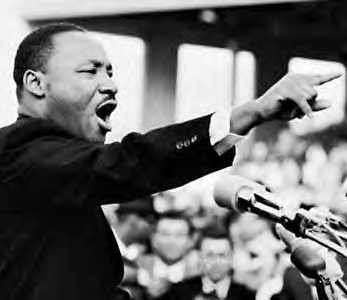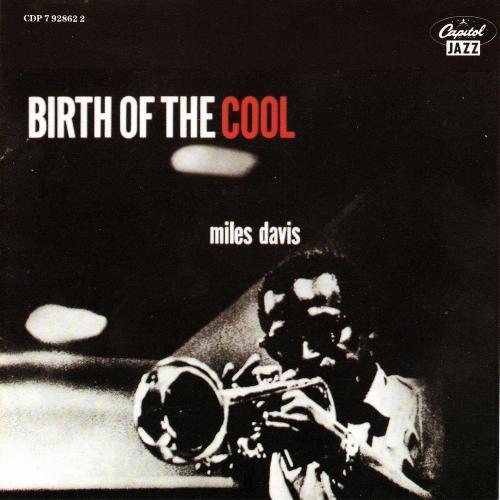12 hours before the March on Washington, where Dr. Martin
Luther King Jr. would deliver his iconic I
Have a Dream speech, he still didn’t know what he was going to say. But on
that historical day, August 28th 1963, Dr. King lead the march and
on the steps of the Lincoln Memorial delivered a speech that would be known as
one of the most important in America’s history.
In his speech, Dr. King references the opening lines of Shakespeare’s
Richard III’s when he said, “this sweltering summer of the Negro’s legitimate
discontent will not pass until there is an invigorating autumn...” indicating a
faith for the finality of difficult times for minorities, a foretelling that the
season was about to change in the social climate of America.
Toward the end of his speech something miraculous
happened. The famous Gospel singer
Mahalia Jackson was nearby and used her
commanding voice to shout, “Tell them about the dream, Martin.” At that point Dr.
King stopped delivering his prepared speech. He stood in his power and began
preaching to the quarter of a million people in attendance on the lawn of the
memorial as well as the millions and millions who have since heard his words,
punctuating each point with “I Have a Dream.” According to U.S Representative
John Lewis who also spoke that day, "Dr. King had the power, the ability,
and the capacity to transform those steps on the Lincoln Memorial into a
monumental area that will forever be recognized. . . he educated, he inspired,
he informed not just the people there, but people throughout America and unborn
generations." 50 years later, we are those generations.
Part of the power of Dr. King’s
I Have a Dream speech was his important references. In it, Dr. King
references not only Shakespeare, the Bible, Gospel spirituals, political and
religious leaders, the Emancipation Proclamation and the Constitution, but also
Dr. King’s speech and entire social message was a strong, tacit reference to
the principle of non-violent revolution for the sake of making lasting social
change. This principle of non-violence was championed by the social revolution
led by Mahatma Gandhi who referenced the ancient
Yoga Sutras. In Sanskrit the
word Ahimsa means non-violence. The Yoga Sutras state that in order to become one’s
highest self, one must embrace the seminal principle of non-violence which is
truly the gateway of unconditional love. Dr. King was so inspired by Gandhi
that in 1959 he visited Gandhi’s birthplace in Gujarat, India. This visit left
a profound impression of the concept of non-violent civil disobedience and
further strengthened Dr. King’s commitment toward America’s struggle for human
rights. And just like in India, it was a non-violent revolution that drove
lasting change in America’s social attitudes.
In his speech, Dr. King also references transformational
heat. In the Yoga Sutras, Tapas is defined as the heat necessary for
transformation, like pottery fired in a kiln. Yoga means union. In yoga, we
practice implementing this transformational heat to bind body, mind, and heart in
our own person to work toward our highest self. With this proverbial heat, we then
direct and bind the larger body of our family, our community, our nation, and our
world in the spirit of its highest self. Growing pains are evidence of Tapas. Certainly
there were growing pains in the Human Rights Movement. This heat was Rosa Parks refusing to give up her
seat on the bus. It was The
Montgomery Bus Boycott in 1955. It was
The March on Washington in 1963. It was
Bloody Sunday in 1965. The heat that causes change can be necessarily
uncomfortable, sometimes outright painful. Dr. King was on the burning tip of
the spear of social transformation, a searing heat that would eventually take
his life. But because of the heat of this social movement, The March on
Washington and the I Have a Dream speech
were two events that helped signal America’s transformation of becoming a
greater nation. That speech marked and catalyzed significant growth in this
country. We are still growing.

Transformation starts with an individual.
Gandhi said, “If
we could change ourselves, the tendencies in the world would also change. As a
man changes his own nature, so does the attitude of the world change towards
him.… We need not wait to see what others do.” How are we willing to step into
that heat of personal transformation? Are we willing to personally grow to
ensure a strong body, bright mind, and open heart to grow into our highest
potential? Are we willing to stand up for an injustice? And how do we make that
change both as an individual and as a nation that allow all parts to grow stronger
rather than being cut or compromised? Surely this is a difficult task. To ensure
mutual growth, we change while practicing non-violence, Ahimsa. Like Gandhi and
Dr. King discovered, Ahimsa is the non-violent revolution both internally and
globally that will make
lasting change.
Whether it’s internal change like greater mindfulness or a more healthy body or
external political or social change like gun control, same-sex marriage,
political partisanship, undocumented immigrants, or anything else, the question
is how can we instigate a change that invites us parts to grow in the process?
We’ve grown as a nation since 1963 but we still have more
to do to honor all the beings who live here. It is because of leaders like
Martin Luther King Jr. that we have a strong foothold on freedom, a firm
platform where we can step into America’s future and truly become the nation
that our forefathers like Washington, Jefferson, Lincoln, Kennedy and leaders
like Dr. King believed we could be, one that we can dream of for ourselves. We
can’t go back. We can never unlearn what we’ve learned. We can move forward. We can
grow individually and as a nation by referencing the past. We can reference both
the failures of social inequality (they still exist), and the inspiration of
the I Have a Dream speech, as mile
markers that will direct us toward protecting the freedoms that make us all
grow closer to actualizing our highest potential individually and as a nation. And
we can use the principles of non-violence (Ahimsa) through understanding the
principle of heat necessary for transformation (Tapas) to help us in this practice.
We can practice moving toward a future where like Dr. King says children of all
races (and I believe given current social and political issues he would include
people of all sexual orientation, documented and undocumented immigrants, gun
loving and gun hating people, Republican and Democrats, etc.) could all hold
hands and with exuberance shout the refrain, “Free at last! free at last! thank
God almighty, we are free at last!”
Join me this week as we continue Dr. Kings legacy by practice
transformation through non-violence and grow individually as the first step to
continuing our growth as a nation.






